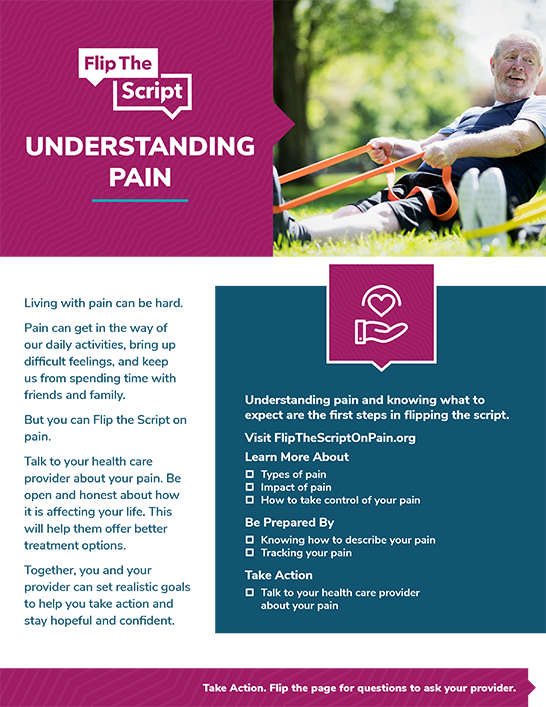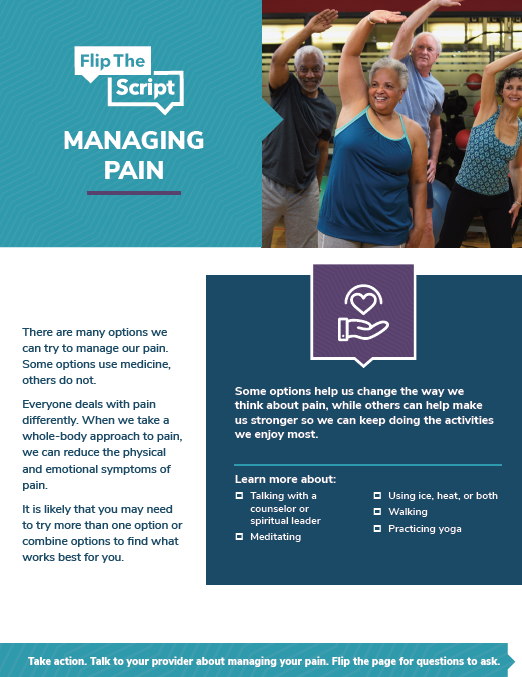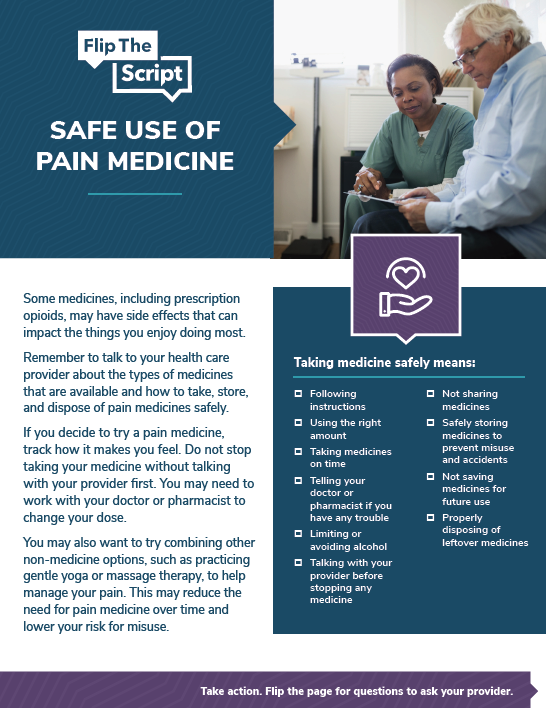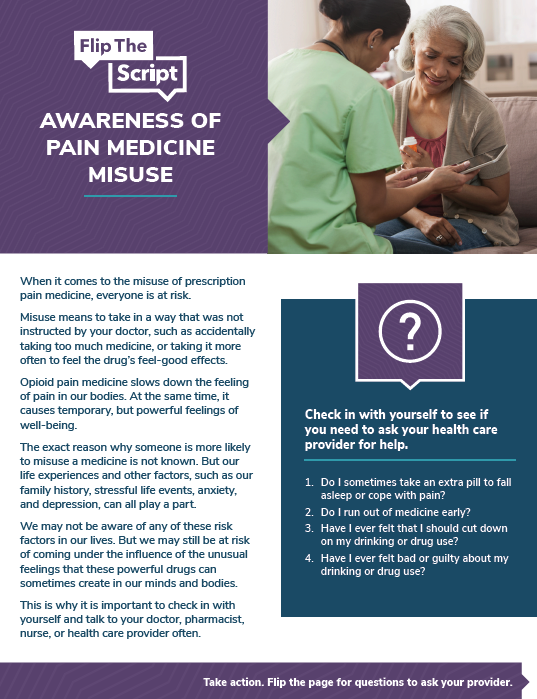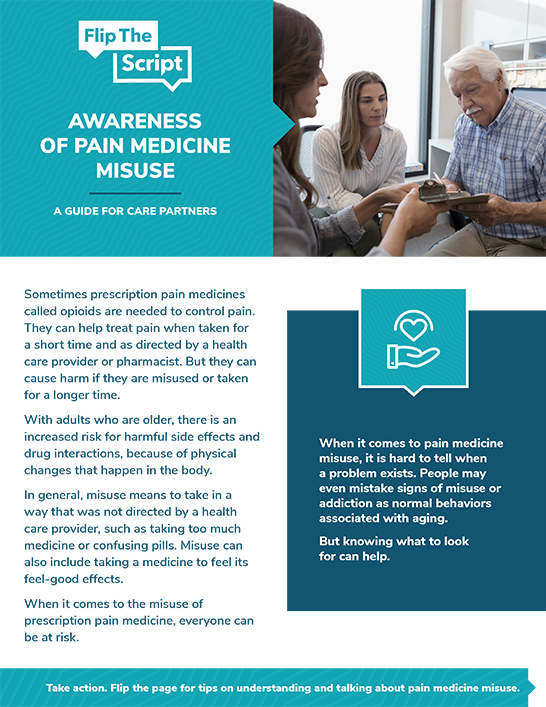The Issue
- Home
- The Issue
Pain is the #1 reason Americans seek medical attention according to the National Institutes of Health. Pain is a more common condition than diabetes, heart disease, and cancer combined.
Our Purpose
Flip the Script promotes discovery, understanding and the use of safe and encouraging pain management approaches to reduce opioid prescription misuse in older adults.
Together, we can learn more, be prepared and take action to Flip the Script on pain.
Materials can be used by older adults, care partners and health care providers to learn more about:
- Pain
- Pain management approaches
- Using pain medicine safely
- Signs and symptoms of prescription opioid misuse
- Safe storage and disposal of pain medicine
Our Objectives
The opioid epidemic in the United States is a far-reaching and life-threatening problem that affects people of all ages. Although current data shows that 45 – 55 year olds are the most heavily affected older adult age group, these individuals, if not treated, will continue to be affected later in life. In addition, misdiagnosis and under communication of pain or medication side effects by older adults age 65 and older could account for lower levels of reported opioid misuse in this population.
For older adults, there are a number of factors that can be attributed to this issue, including multiple chronic conditions and chronic pain, polypharmacy, health literacy, a misunderstanding of the medication or how to take it, little understanding of serious side effects and signs of overdose and the stigma of addiction. Reports from the Centers for Medicare and Medicaid Services on Medicare Part D opioid prescribing rates support the notion that adults 65 years and older are indeed affected by opioids. The data shows that nationally, one-third of beneficiaries or 14.4 million people had at least one opioid prescription in 2016, with over 500,000 beneficiaries using very high amounts of the medication (DHHS/OIG, 2017).
In geriatric medicine, relief of pain and suffering and promotion of functional status and quality of life are at the heart of standard care. Health care providers frequently deal with issues of chronic pain in the older adult population. Pain is estimated to affect 79% of patients 85 years old and older and 25%–50% of community-dwelling older adults have been shown to have substantial pain (AGS Geriatrics Review Syllabus article on Pain Management).
Safe storage and disposal of opioids is also part of responsible use. Oversharing of medications by older adults as well as theft by family members is common. Patient and care partner education surrounding this issue can help reduce these common and unsafe behaviors.

